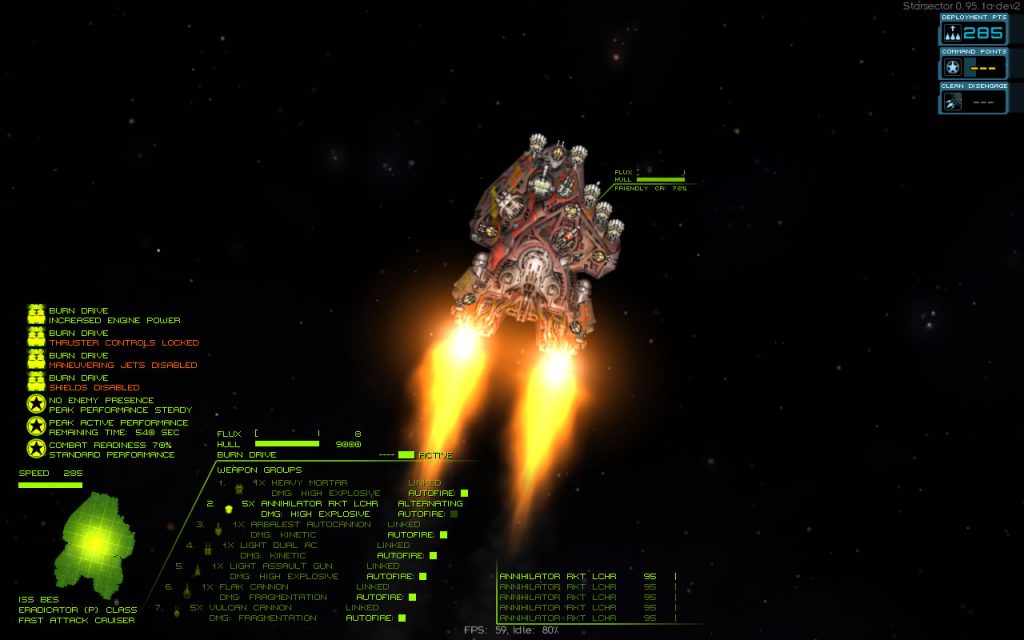This blog post is a tricky one to write – all the pieces are interrelated, and figuring out where to start, and how much background info to provide – to make sure this is comprehensible without having a PhD in Starsectology… well, right, tricky. So, let’s start by taking a brief step back and looking at the kinds of ships there are in the game. There are lots of ways to slice that pie, too, but let’s look at tech levels – namely, “Low Tech” and “High Tech”. There are others, and it gets blurry in places, but for this post, these two are what’s important.
The key thing is that high tech is not intended to be better than low tech, just a different way of doing things. High tech has speed, good shields, and fairly inefficient (but varied!) lower-ranged weapons. Low tech is slower and more ponderous, has high armor and hull integrity, with efficient longer-ranged weapons. The dynamics you get when they face each other is that high tech ships dart in and out of engagement range, relying on shields to see them through, while low tech ships try to make them pay a price for closing in. This is simplifying things a great deal, of course, and there are exceptions, but this is a high-level overview.

Read the rest of this entry »
In this post, I’m going to talk about one of the new mechanics we’ve been working on; but first, a little background. Starsector has been designed starting with the combat layer and working up, and this has both up and downsides. We get to work out the combat layer first, and make reasonably polished releases with combat as the centerpiece – that’s a good thing. On the other hand, this means that as the campaign comes into focus, we can either 1) force it to fit in with how combat currently works or 2) adjust the way combat works to make it a better fit for how we want the campaign to work.
Option one is unquestionably faster and easier, but also seems likely to result in a tacked-on campaign because of the compromises that we’d have to accept to make it fit. Option two is more work, but is the one most likely to result in a campaign that’s a game in its own right, on par with combat. Do I even need to say which option I find more appealing? (Hint: it’s the second one.)
Enter combat readiness (“CR” henceforth), a mechanic specifically intended to improve the connection between the campaign and combat layers. There are already mechanics that link the two – for example, the persistent fleet, ship damage & repairs between battles, and character skills. So, we’re not talking about anything radically new; just taking stock of what’s there and cleaning it up, smoothing over the rough edges. While this involves some changes to combat mechanics, the goal is to enable the campaign to exert a greater influence on combat (and vice-versa), rather than to rework combat for its own sake. We’re giving the campaign tools to work with, levels to push, knobs to turn, analogies to abuse.
Conceptually, CR represents weapon and system maintenance and repair, securing the magazines, making sure there are no cargo crates knocking about in the hold, that sort of thing. In-game, it’s presented as a percentage. A good way to think of it is as a “stamina” mechanic on the campaign level.
So, how does it work?
Read the rest of this entry »























